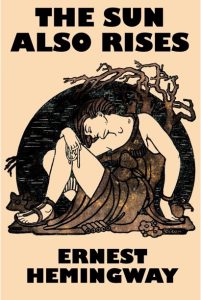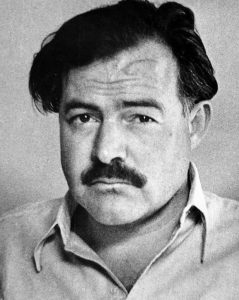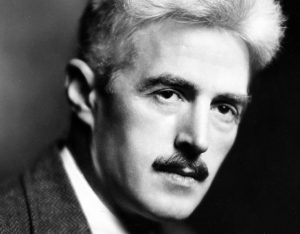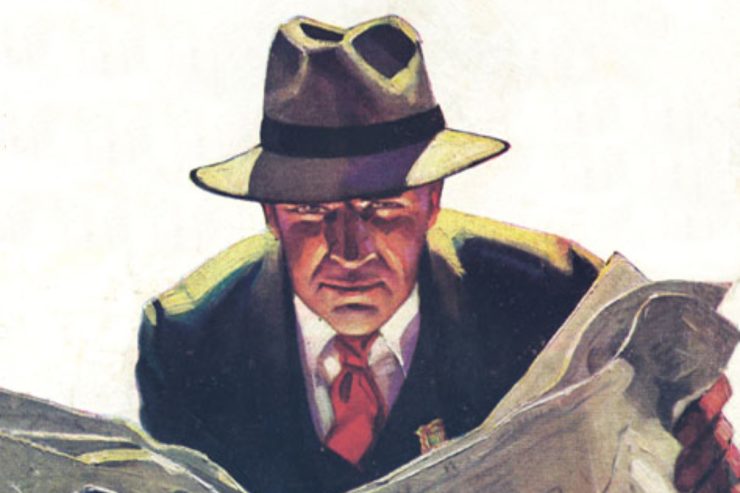 On Saturday, August 6, beginning at 1:30 PM, PulpFest 50 will explore the topic, “Influence or Coincidence: Hemingway’s Fiction and Hammett’s Hardboiled Pulp.”
On Saturday, August 6, beginning at 1:30 PM, PulpFest 50 will explore the topic, “Influence or Coincidence: Hemingway’s Fiction and Hammett’s Hardboiled Pulp.”
Ernest Hemingway and Dashiell Hammett: taciturn, laconic stylists with an acid gift for understatement and subtext looming just below the surface of hardboiled, pared-to-the-bone prose. Did they evolve their hyper-masculine, modernist, and telegraphic styles independent of one another, or did one possibly influence the other?
The debate over the question of potential influence in one or both directions regarding the two authors is a target-rich topic that has fueled decades of scholarship. Hammett and Hemingway were contemporaries who were well aware of one another fairly early in their respective careers.
As a published fiction writer, Hammett was first to the well, publishing short stories in the pulps as early as 1922. He broke into the pages of Black Mask in 1923, though his noted style was still in the making.
 In Hemingway’s case, the style was there from the jump when he published Three Stories and Ten Poems in 1923, followed closely by In Our Time in 1924. In 1926, Hemingway set the literary scene on its ear with the publication of his first novel, The Sun Also Rises.
In Hemingway’s case, the style was there from the jump when he published Three Stories and Ten Poems in 1923, followed closely by In Our Time in 1924. In 1926, Hemingway set the literary scene on its ear with the publication of his first novel, The Sun Also Rises.
One year later, Hammett depicts a woman reading The Sun Also Rises in his short story “The Main Death,” originally published in Black Mask in June 1927.
Hammett’s most lauded work, The Maltese Falcon, began appearing in serial format in Black Mask in the fall of 1929, the year Hemingway published his second novel, A Farewell to Arms. By then, Hemingway was back in America, and so would have had access to the pulps he would have been hard-pressed to read as a young man in Paris through much of the 1920s.
Both authors also engaged directly with Gertrude Stein: Hemingway as a young man whom Stein mentored, and Hammett as a faltering writer and increasing alcoholic already on his way down.
Hem was a man who read widely and enjoyed crime fiction, particularly the novels of Georges Simenon. Stein turned Hemingway onto the thrillers of Marie Belloc Lowndes, especially The Lodger, which Hemingway loved.
Conversely, at least by the early 1930s, we know Hemingway was a reader if not some flavor of Hammett fan. In a May 1931 letter to his editor, Max Perkins, Hem asks that a copy of Hammett’s novel The Glass Key be sent to him in Madrid.
Later that same year, in an inscription to journalist and author Eric Knight, Hemingway references their meeting with Hammett: “Remembering a fine evening we spent listening to Mr. Dashiell Hammett tell us not to be mugs — That tall white-haired drink of contented cowpiss — The talented cheap bastard.”
 Friends or “frenemies,” the question stands: did Hemingway influence Hammett, or was it the other way around?
Friends or “frenemies,” the question stands: did Hemingway influence Hammett, or was it the other way around?
We’ll aim to puzzle out that question on August 6. We hope that you’ll join us on August 6 when award-winning novelist, journalist, and editor Craig McDonald leads a wide-ranging discussion about the fiction of Ernest Hemingway and Dashiell Hammett. Was it influence or coincidence that these two contemporaries were writing in similar styles when at the height of their literary powers? Craig will be joined by William Patrick Maynard, the director of PulpFest’s afternoon programming.
One lucky attendee of our “Influence or Coincidence? Hemingway’s Fiction and Hammett’s Hardboiled Pulp” panel will go home with a hardcover copy of All Man!: Hemingway, 1950s Men’s Magazines, and the Masculine Persona, Dr. David M. Earle’s exploration of the popular image of Ernest Hemingway and the men’s adventure magazines. You need to be in attendance at our panel to win. Many thanks to Mike Chomko, Books for their generous donation of our door prize.
The general public is welcome to attend our programming events. To learn more about our schedule, please click the Programming button at the top of this page.
If you would like to register as a dealer at this year’s PulpFest, we’ve run out of tables. Please contact Jack Cullers ASAP to be added to our waiting list. You can reach him at jassways@woh.rr.com or jack@pulpfest.com.
To enjoy our dealers’ room, click the Registration button at the top of this page to join PulpFest. And don’t forget to book a room at the DoubleTree by Hilton Pittsburgh — Cranberry in Mars, Pennsylvania. They’re going fast! So don’t wait! Remember, you must book your room by 11:59 PM on Wednesday, July 20, to get the special convention rate.
You can reserve a room by calling 800.222.8733 or 724.776.6900.
The author of the Edgar-nominated Hector Lassiter historical crime series, Craig McDonald is an award-winning novelist, journalist, and editor. His series chronicles the exploits of a fictional Black Mask author and his encounters with such notable figures as Ernest Hemingway, Orson Welles, Ian Fleming, and Lester Dent. In addition to his Edgar nomination, Craig was also a finalist for the Anthony, Gumshoe, and Crimespree Magazine Award for best first novel.
 The Sun Also Rises is Ernest Hemingway’s first “real” book, apart from the first attempts at smaller publishers. First published in October 1926 by Scribner’s in an edition of 5090 copies, selling at $2.00 per copy, it featured dust jacket art by Cleonike Damianakes. In an essay by Wolfgang Stock, the writer asserts that “The novel hits readers and critics like a bomb. A new style is born, factual, laconic, close to life.”
The Sun Also Rises is Ernest Hemingway’s first “real” book, apart from the first attempts at smaller publishers. First published in October 1926 by Scribner’s in an edition of 5090 copies, selling at $2.00 per copy, it featured dust jacket art by Cleonike Damianakes. In an essay by Wolfgang Stock, the writer asserts that “The novel hits readers and critics like a bomb. A new style is born, factual, laconic, close to life.”
Dashiell Hammett’s “The Maltese Falcon” was serialized in five parts by Black Mask, beginning with its September 1929 number and featuring cover art by H. C. Murphy. By the time of its appearance, Hammett had been appearing regularly in the pulp magazine since mid-1923. His earliest stories were written under the pseudonym of Peter Collinson.
The first book edition of The Maltese Falcon was published by Alfred A. Knopf in 1930. The jacket designer is not known.







